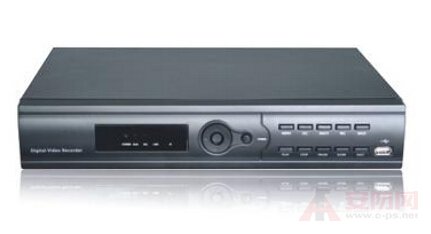
A: The main purpose of the DVR is to convert the analog signal transmitted from the front-end device (such as a camera) into a digital signal, which is compressed and stored in the hard disk, generally divided into PC type and embedded.
2. Q: What is MPEG?
A: It is an organization jointly established by ISO (International Standardization Association) and IEC (International Electron Association) in 1988. Its main work is devoted to the standardization of moving pictures (MPEG video) and its audio coding (MPEG audio).
3. Q: What kinds of MPEG series are available?
A: MPEG has a total of five versions: MPEG-1, MPEG-2, MPEG-4, MPEG-7 and MPEG-21. Among them, MPEG-1 and MPEG-2 are widely used, and MPEG-4 has been launched for two years, but its application has only recently become active. MPGE-7 and MPEG-21 are future standards.
4. Q: What are the applications of MPEG-1?
A: MPEG-1 was established in 1992. It is an international standard for digital storage media moving images and audio encoding design for data transmission rates below 1.5 Mbps. It is mainly used on CD-ROM (including Vdieo-CD, CD-I, etc.). Stores color synchronized motion video images. Its purpose is to compress a 221 Mbit/s N image to 1.2 Mbit/s with a compression ratio of 200:1. Using the MPEG-1 compression algorithm, a 120-minute movie can be compressed to about 1.2 GB, so VCD production is widely used. Currently, more than 90% of VCDs are compressed in MPEG-1 format.
5. Q: What are the applications of MPEG-2?
A: MPEG-2 was introduced in 1996 and is mainly used to solve multimedia transmission problems. The quality of images transmitted over broadband can reach the standards of television broadcasting and even HDTV, supporting a wider range of resolution and bit rate, and becoming a compression method for digital image discs (DVDs) and digital broadcast televisions. It can compress a 120-minute movie to 4-8GB, providing bass channels and up to 7 audio channels.
6. Q: Why is the MPEG-3 standard not formulated?
A: Since the excellent performance of MPEG-2 can be applied to HDTV, the MPEG-3 standard has not been developed. What we usually call MP3 refers to MPEG Layer 3, just an audio compression standard for MPEG.
7. Q: What are the applications of MPEG-4?
A: MPEG-4 was released in January 1999, followed by the second edition in December. The official ISO of MPEG-4 is named ISO/IEC14496. The biggest innovation of MPEG-4 is to give users the ability to build systems for their applications, not just the user-oriented fixed standards. MPEG-4 will integrate as many data types as possible, making it possible for us to build a personalized audiovisual system for the first time.
8. Q: Where is the advantage of MPEG-4 compared with MPEG-1 and MPEG-2?
A: Compared with MPEG-1 and MPEG-2, it not only has advantages in compression algorithms and disk space applications, but also becomes more mature in technology over time. If you bring a group of children to the toy store, in the world of MPEG-1 and MPEG-2, you can only tell them: "Put your nose on the window and watch the toys." But in the world of MPEG-4, you can Say to them: "Do you see the toy? Go play with him!"
9. Q: What is the latest MPEG digital compression format?
A: The MPEG organization is about to approve a new digital compression format called H.264, created by the United Video Group, a joint video group formed by the United States and the European Standards Organization. It will be the 10th part of the MPEG-4 standard. It was approved at the end of this year. It speeds up the development of Internet and wireless video on demand services, and improves performance by 33% over MPEG-4 video formats.
10. Q: What is the H.261 and H.263 standards?
A: In 1984, the International Telegraph and Telephone Consultative Committee (CCITT) Study Group 15 established an expert group to study the coding standards for video telephony and conference television. In December 1990, the transmission rate was officially adopted at P×64 kb/ S (P = 1, 2, ... 30) audiovisual service codec CDELCH.261 standard. This standard is primarily intended for conference video, video telephony, and other multimedia communications over telephone lines.
PC Stand
PC strand is mainly used for the reinforcement of prestressed concrete structures, such as large-span railway and road bridges, major bridges, silos, buildings, dams, floor slabs, foundations, large concrete vessels, atomic reactor buildings, stadiums, airport hangers, pre-cast segments, crane beams, anchorages and multi-story industrial buildings etc.
Our PC strand is also used for the construction of highways, poles and water towers in civil construction, and energy source sea transportation, house buildings, water control projects, and rock and earth anchoring components to increase the tensile force.
Pc Stand,High Carbon Pc Stand,Unbonded Pc Stand,Computer Stand
HENGSHUI YUZHENG IMPORT AND EXPORT CO., LTD. , https://www.yuzhengnails.com